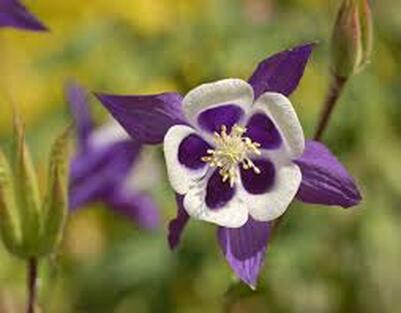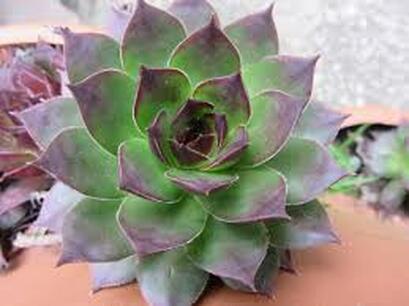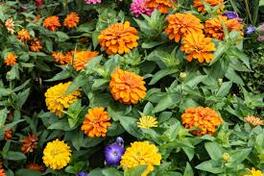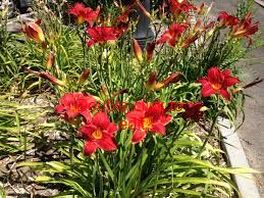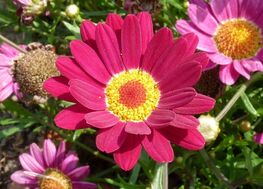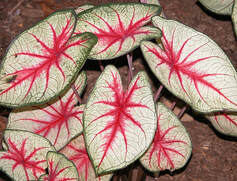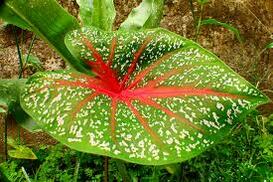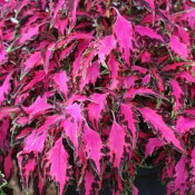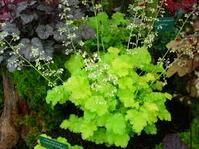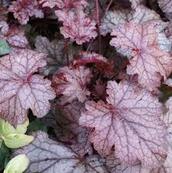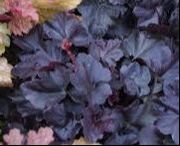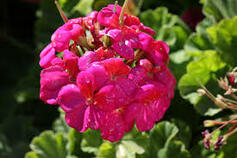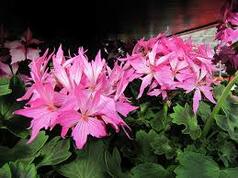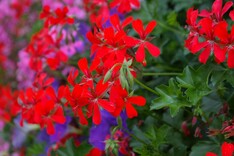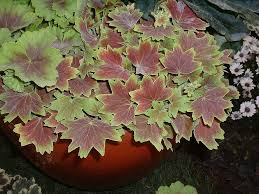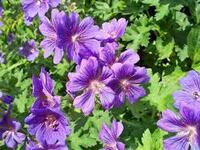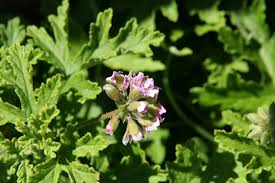Garden Tips
General gardening tips are listed first. Scroll down for information and tips on specific plants--they're listed alphabetically.
Did you know many plants have two names?
|
One is the botanical name, often in Latin, and the other is called the common name. Here are the botanical and common names of some plants often sold at Arasapha's May Market. Notice that some plants’ botanical and common names are the same. Sometimes the botanical name is more “common” than the common name.
African daisy = Osteospermum Avens = Geum Bachelor's button or cornflower = Centaurea Begonia = Begonia Bleeding heart = Dicentra Bush violet = Browallia Chinese lantern = Abutlion Columbine = Aquilegia (pictured) Coral bells = Heuchera Daylily = Hemerocallis Dragon tree = Dracaena Elephant ears = Colocasia Firecracker plant = Cuphea Foamflower = Tiarella Hens and chicks = Sempervivum (pictured) Indian tobacco = Lobelia Leopards bane = Doronicum Moss rose = Portulaca Pincushion flower = Scabiosa Plantain lily = Hosta Polka dot plant = Hypoestes Spurge = Euphorbia Swan River daisy = Brachyscome |
What's the difference between annual and perennial garden plants?
|
Annuals such as petunias, impatiens, and zinnias (top) die at frost, while perennials such as daffodils, sedum, and daylilies (bottom) grow back each year.
Some plants grown as perennials in warmer regions aren’t hardy enough to survive Delaware winters. Here we call them "tender perennials" and grow them as annuals. Caladiums and elephant ears (see separate listings below) are two examples. Why buy annuals, which must replaced every year? Perennials often bloom for just a few weeks, while annuals often bloom all season. For more information, see this article in Country Living. Arasapha’s May Market carries an interesting selection of annuals and perennials, and volunteers there can advise you on the best choice for your garden. |
What are native, non-native, aggressive, and invasive plants?
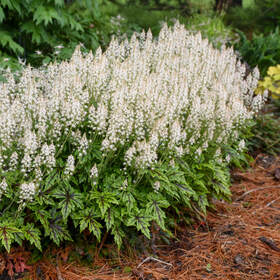 Foamflower (tiarella) is a beautiful plant native to our region.
Foamflower (tiarella) is a beautiful plant native to our region.
Native plants are plants that have lived in this region for centuries. Coral bells (heuchera), foamflower (tiarella), phlox, and spiderwort (tradescantia) are examples of plants native to our region that are sold at Arasapha's May Market. There are many benefits to growing native plants. Because they're adapted to this region, they're often easier to grow than non-native plants and they're more likely to support native wildlife, like bees and butterflies.
But native plants are not necessarily carefree. Some native plants, considered aggressive, grow faster than others and, if unchecked, may crowd out neighboring plants. Goldenrod (solidago) is an example of a native plant that may grow aggressively. If you'd like an aggressive native plant in your yard, the key is to give it plenty of room and be prepared to divide it every few years.
Non-native plants originated in another part of the world. Roses (originally from Asia), tomatoes (originally from South America), and geraniums (originally from south Africa) are examples of non-native plants. Many non-native plants thrive in our region, although some require more care (water, fertilizer, pesticides) than native plants.
Some non-native plants spread and become so pervasive that they crowd out other beneficial plants, throwing the local ecosystem out of balance. These plants are called invasive. The State of Delaware maintains a list of plants that it has deemed invasive. While you're not required to remove any invasive plants from your yard, it is illegal to buy, sell, transport, or distribute these plants in Delaware.
As you review Delaware's list of invasive plants, keep in mind that sometimes only one variety of a plant is invasive. While the common orange roadside daylily is considered invasive, all other daylilies are fine. Similarly, while the multiflora rose is considered invasive, all other roses are fine.
Also keep in mind that a plant may be invasive in one region but not another. Lantana, for example, is considered invasive in the southern United States where it can grow year round. It's not considered invasive in Delaware because it dies at frost here, limiting its spread.
But native plants are not necessarily carefree. Some native plants, considered aggressive, grow faster than others and, if unchecked, may crowd out neighboring plants. Goldenrod (solidago) is an example of a native plant that may grow aggressively. If you'd like an aggressive native plant in your yard, the key is to give it plenty of room and be prepared to divide it every few years.
Non-native plants originated in another part of the world. Roses (originally from Asia), tomatoes (originally from South America), and geraniums (originally from south Africa) are examples of non-native plants. Many non-native plants thrive in our region, although some require more care (water, fertilizer, pesticides) than native plants.
Some non-native plants spread and become so pervasive that they crowd out other beneficial plants, throwing the local ecosystem out of balance. These plants are called invasive. The State of Delaware maintains a list of plants that it has deemed invasive. While you're not required to remove any invasive plants from your yard, it is illegal to buy, sell, transport, or distribute these plants in Delaware.
As you review Delaware's list of invasive plants, keep in mind that sometimes only one variety of a plant is invasive. While the common orange roadside daylily is considered invasive, all other daylilies are fine. Similarly, while the multiflora rose is considered invasive, all other roses are fine.
Also keep in mind that a plant may be invasive in one region but not another. Lantana, for example, is considered invasive in the southern United States where it can grow year round. It's not considered invasive in Delaware because it dies at frost here, limiting its spread.
Create a stunning planter with "thrill, fill, spill."
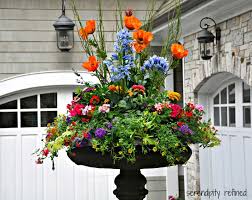
Magnificent planters have three elements: tall dramatic plants for thrill, trailing plants to spill over the edges, and mid-sized plants to fill the planter. See interesting examples at www.finegardening.com/article/creating-high-drama-container-designs. Arasapha's annual May Market always has volunteers on hand to help you choose the perfect plants for your planter.
Avoid accidentally digging up spring bulbs.
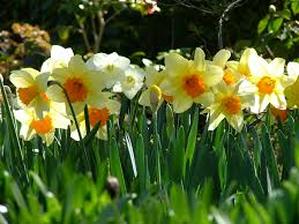
Mark where your spring bulbs are planted so you don't accidentally dig them up later in the year. You can use:
Golf tees
Small stones painted in the color of your bulb's flower
Tongue depressors marked the bulbs' names with a china pencil or with a Sharpie with permanent ink
Bamboo half-circles to mark a large bulb or a cluster of small ones. They are about 4 inches across and used to make handles for small fabric purses (Nantucket bags or Bermuda bags). You can buy them on Etsy.
Golf tees
Small stones painted in the color of your bulb's flower
Tongue depressors marked the bulbs' names with a china pencil or with a Sharpie with permanent ink
Bamboo half-circles to mark a large bulb or a cluster of small ones. They are about 4 inches across and used to make handles for small fabric purses (Nantucket bags or Bermuda bags). You can buy them on Etsy.
Do your plants look tired by mid-summer? Give them a haircut!
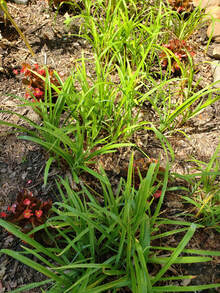
Do some of your plants look a little brown and tired by mid-summer, or have they stopped blooming? Give them a haircut! The leaves of the daylilies shown here were cut back to about 6 inches off the ground two weeks before this photo was taken. Already they're bouncing back with fresh green leaves.
Mid-summer haircuts also help revive petunias and perennial cranesbill geraniums. Liriope (lilyturf) can get a haircut in early spring.
Mid-summer haircuts also help revive petunias and perennial cranesbill geraniums. Liriope (lilyturf) can get a haircut in early spring.
Yes, you can save garden plants removed in the fall to donate to next spring's May Market!
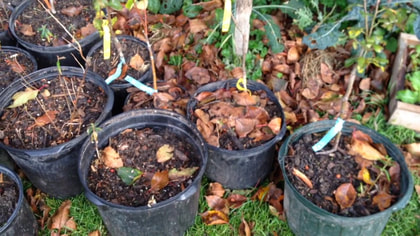
If you’re removing, thinning, or dividing any perennials in fall, consider placing the plants you’ve removed in pots. Then save them over the winter to donate to Arasapha's annual May Market the following spring. Garden experts will tell you that the best way to do this is to “heel in” the pots, which means placing them in a hole or trench in the ground. But hardy plants like hostas and sedum do just fine if you simply place the pots in a sheltered spot—along a fence or under a shrub. They’ll survive winter just fine and look beautiful by the time May Market rolls around.
How can you grow a new African violet from a leaf cutting?
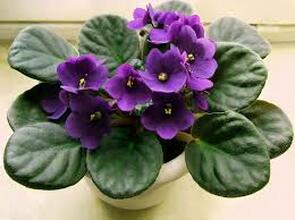
Growing new African violets isn’t as hard as one might think. It's usually done in the springtime. Remove a healthy leaf with its stem (petiole) by cutting it off or snapping it off neatly at the stem of the plant. Trim the stem to about 1 ½ inches for best results. Take the leaf and insert the leaf stem into a hole in the growing medium, then water it thoroughly. Roots should appear at the base of the petiole within three to four weeks. When the roots appear, new leaves and plants should start peeking through the ground three to four weeks after that. Two to six months after the process starts, the new plants should have two to three leaves. At that point, they are safe to repot.
Consider growing a new African violet from yours and donating the new plant to Arasapha's annual May Market. It's a free and easy way to help others enjoy a lovely houseplant and raise funds for the gardens of Arasapha!
Consider growing a new African violet from yours and donating the new plant to Arasapha's annual May Market. It's a free and easy way to help others enjoy a lovely houseplant and raise funds for the gardens of Arasapha!
Argyranthemum adds dramatic cool-weather color
|
No, this isn't a zinnia or a mum or an aster. Argyranthemum is an annual that blooms in cool weather--spring and then fall through frost. It does best in sunny locations and in relatively dry soil. After spring blooming, deadhead (cut off the dead blooms) and enjoy the lovely dark green, fern-like foliage through the summer until it reblooms in fall.
|
Consider bacopa for a hanging basket or as a colorful ground cover
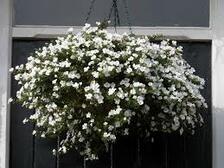
Have you ever heard of bacopa (pronounced bah-COH-pah)? It’s a quickly spreading annual only 4-8” high, with pink, blue, or white flowers. It’s a great choice for a colorful ground cover or a hanging basket in a sunny spot—just keep it moist or it will stop flowering. Bacopa is often sold at Arasapha's annual May Market.
Consider basil for your herb garden
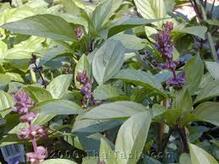 Thai basil
Thai basil
Basil comes in so many interesting varieties! You'll find a wide selection at the Herbs table at Arasapha's annual May Market.
Thai basil has a bit of an anise or licorice scent, making it great for southeast Asian dishes. Its purple stems makes it a pretty garnish!
Thai basil has a bit of an anise or licorice scent, making it great for southeast Asian dishes. Its purple stems makes it a pretty garnish!
Consider blanket flowers (gaillardia) for a sunny spot in your garden.
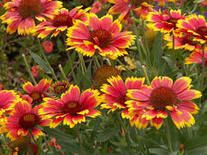
Blanket flowers (gaillardia) may be perfect for sunny spots in your garden. Their daisy-like flowers bloom from early summer to early fall in lovely combinations of yellow, orange, and red. They're perennials, which means they come back year after year. Gaillardia are often sold at Arasapha's annual May Market.
Bleeding hearts (dicentra) bring spring color to shady garden spots.
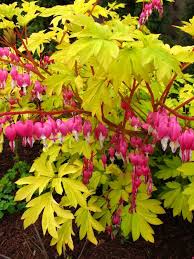 'Golden Heart' bleeding heart adds a pop of bright color to brighten a shady spot.
'Golden Heart' bleeding heart adds a pop of bright color to brighten a shady spot.
Bleeding heart (dicentra) is a wonderful choice for a shady garden. It’s a perennial, which means it comes up year after year, and it adds lovely color to spring gardens. Plant other shade-loving plants like hosta or coleus around it to fill in your garden after your bleeding heart fades in mid-summer. Unusual varieties of bleeding heart are often sold at Arasapha's May Market.
Consider caladiums as a houseplant or in a shady garden spot
|
Caladiums are tropical plants with gorgeous leaves that can be grown in Delaware as annuals or houseplants. They’re easy to grow and bring bright colors to shady garden corners. In the fall, dig them up and bring them indoors for a winter houseplant! Caladiums are often sold at Arasapha's annual May Market.
|
Consider calibrachoa for a sunny garden bed or hanging basket
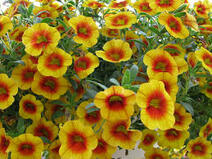 Calibrachoa 'Apricot Punch'
Calibrachoa 'Apricot Punch'
Calibrachoa (pronounced kal-ih-brah-KOE-ah) have exploded in popularity in recent years. No wonder: They look like tiny petunias, come in every color of the rainbow, and look beautiful all season. This is "Apricot Punch." Growing 6-12” tall and spreading about 1-2’ wide, calibrachoa are perfect as a bedding plant in a well-drained sunny spot (they prefer soil on the dry side) or in a hanging basket. Learn more here. Arasapha's May Market always carries several interesting, beautiful varieties of calibrachoa.
Consider carpet bugle (ajuga) as a perennial ground cover
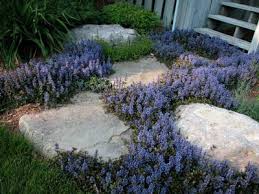
Check this adorable groundcover: Chocolate Chip Carpet Bugle (Ajuga ). Pretty blue flowers on chocolate foliage! Great in a planter too. It's often available at the Plants table at Arasapha's annual May Market.
Yes, you can save your coleus for next year.
|
If you love your coleus, you can save it for next summer. Follow these steps from the August 2019 issue of Garden Gate magazine:
1. Cut a 4 to 6 inch stem. Remove the lower leaves, leaving the top set of 4 leaves. Place the stem in a jar filled with water. Roots will start growing in about 2 weeks. 2. In late summer/early fall, plant the rooted cuttings in 4" pots and place on a sunny windowsill. 3. In about a month, transplant into 6" pots. Over the winter, water as needed. Pinch off the tops periodically--that will force the plant to grow more stems and become fuller. |
Consider coral bells (heuchera) for shady spots in your garden.
Coral bells (heuchera) are a wonderful choice for a shady garden. Their foliage—which may be green, coral, lime, rose, or purple--adds a dramatic pop of color all year. Bonus in mid- to late summer: delicate spikes of pink or white flowers. They’re perennials, which means they come back year after year. Arasapha's annual May Market always offers some interesting coral bells.
Consider cutting leaf celery for your herb garden
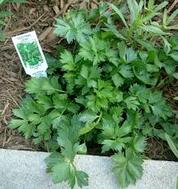
Have you ever heard of cutting leaf celery? It’s celery without the thick stalks. It looks a bit like flat-leaf Italian parsley, only with a lovely celery aroma. Great in soups, stews, and salads! It’s usually sold at Arasapha's annual May Market.
Daylilies are a great perennial addition to a sunny garden.
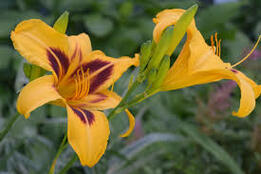
Daylilies are easy to grow and come in almost every color and height. Some varieties bloom all summer! Every year they get bigger (width, not height!), so every few years they can be divided and replanted, filling your garden with color. Arasapha's annual May Market always has daylilies donated from local gardens.
Is there a difference among dianthus, pinks, sweet williams, and carnations?
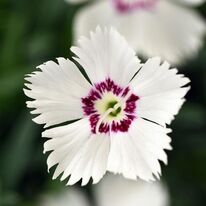 Dianthus 'Mountain Frost White Twinkle'
Dianthus 'Mountain Frost White Twinkle'
Dianthus is the botanical name for several perennial and biennial plants with blooms that have pinked or zigzag petal edges. (If you know someone who sews, they may have pinking shears that give a pinked or zigzag edge to fabric.) Cottage pinks (dianthus plumarius) grow about a foot tall and bloom in late spring. Alpine pinks (dianthus alpinus) and cheddar pinks (dianthus gratianopolitanus) grow just a few inches tall and make a great ground cover or border. Sweet william (dianthus barbatus) has clusters of flowers rather than individual blooms. Carnations (dianthus caryophyllus) may grow 1-2 feet tall and typically bloom in mid-summer.
Deadhead (clip off) or shear off faded dianthus blooms to keep the plant blooming longer or maybe get a second burst of blooms later in the summer. After dianthus blooms, the silver-blue leaves contrast nicely with summer flowers. Arasapha's May Market often carries dianthus in interesting colors.
Deadhead (clip off) or shear off faded dianthus blooms to keep the plant blooming longer or maybe get a second burst of blooms later in the summer. After dianthus blooms, the silver-blue leaves contrast nicely with summer flowers. Arasapha's May Market often carries dianthus in interesting colors.
Try elephant ears for a tropical backdrop.
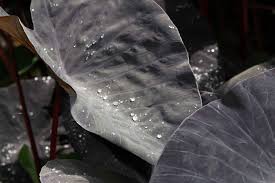
Elephant ears (colocasia) are tropical plants that can be grown in Delaware as annuals. (If planted in a sheltered spot and heavily mulched, they may survive winters here.) They grow quickly to 3' tall, and they need plenty of water to support that fast growth, making them a good choice by a pond. Varieties with black leaves are a striking backdrop for green or flowering plants. Plant them in sun for black leaves; in part shade they’ll turn dark green. Trim off older leaves to keep elephant ears looking their best all summer. Arasapha's May Market often carries black elephant ears, and they sell out fast!
Euonymous adds bright year-round color to partly shady spots.
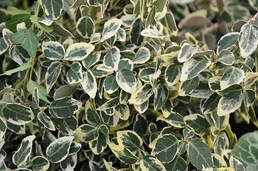 Euonymous fortunei 'Emerald Gaiety'
Euonymous fortunei 'Emerald Gaiety'
Euonymous is an evergreen shrub that can grow about 2-3' tall and 3-4' wide. If you plant it near a fence or foundation, the stems will try to climb up it, and indeed you can train euonymous to climb higher than 3' by tying some of the stems to a support like a fence rail. Euonymous grows in sun or part shade, but it's happiest in part shade. In late fall and early winter, the white on some of the leaves turns pink, adding even more winter interest.
Geraniums and pelargoniums offer lots of options for sunny gardens and planters
|
With their eye-popping blooms and pretty leaves, geraniums are a great addition to any sunny garden or planter. And there are so many varieties! Zonal geraniums are the kind you’ve probably seen all your life: snowballs of red, white or pink flowers atop ruffled leaves. Ivy geraniums have smaller flowers and trailing stems and are perfect for planters and window boxes. Interspecific geraniums are a mix of the two, with larger flower heads and trailing stems. Stellar geraniums have interesting, star-like flowers and pointed leaves. Brocade or fancy-leaf geraniums have gorgeous multicolored leaves. Scented geraniums are grown primarily for their scent—their flowers are small. Plant them near a path or doorway. Some repel mosquitos!
Cranesbill geraniums are the perennials of the family, with lavender blue or purple flowers on delicate leaves. And here's some trivia for you: perennial or cranesbill geraniums are the only true geraniums. All the others--those grown in Delaware as annuals--are really pelargoniums. Someone misnamed them hundreds of years ago and the name stuck. Learn more about geraniums here. May Market always has an interesting selection of geraniums. |
Use gold dust plants (aucuba) as evergreen backdrops in shady areas.
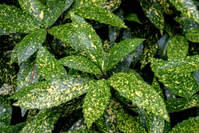
Gold dust plants (aucuba ) are evergreen shrubs that thrive in shade, making a great backdrop for smaller shade shrubs and perennials. They add lovely winter color to a garden. Don't plant them in sun! If you do, they'll get sunburned--leaves will turn black.
Consider hostas for shady garden spots
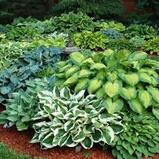
Hostas are wonderful choices for shady garden spots. They’re showy, easy to grow, come back year after year, and come in a variety of sizes, shapes & colors. The only care they need: Sprinkle them with slug repellent every couple of weeks in late summer to keep slugs from nibbling on the leaves. Hostas are often available at Arasapha's annual May Market. Some are donated from local gardens and sold at bargain prices!
Juncus is great almost anywhere!
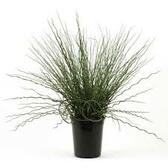 Juncus 'Twisted Arrows'
Juncus 'Twisted Arrows'
Juncus is great as a houseplant, for adding height to a planter, and for adding texture to a garden border. This “Twisted Arrows” variety is often available at Arasapha's annual May Market.
Lantana adds striking colors to a sunny spot or planter.
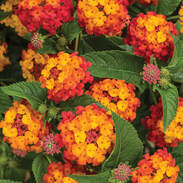 This 'Luscious Citrus Blend' lantana was sold at our 2019 May Market.
This 'Luscious Citrus Blend' lantana was sold at our 2019 May Market.
Lantana is growing in popularity and no wonder—its flowers often have fun color combinations such as pink and yellow. In Delaware lantana can be grown as an annual in a sunny garden spot or planter. It’s easy to grow, blooms all summer, and grows 1-2 feet tall. Shear it back a bit in midsummer for even more blooms. Arasapha's annual May Market usually offers some interesting lantana.
Plant lavender next to a walkway.
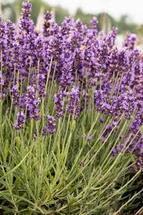 Lavender 'Hidcote Blue'
Lavender 'Hidcote Blue'
Plant lavender near a walkway, doorway, or patio so passersby can enjoy their lovely scent. Hidcote Blue is famous for its dark purple flower and is a bit more compact than other varieties, growing to about 18-20” tall. Arasapha's May Market carries as many as 8 varieties of lavender! Click here for more information on lavender varieties and how to grow them.
Consider liriope for your perennial garden.
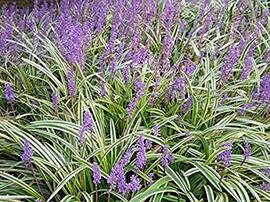
Liriope (pronounced lih-RYE-oh-pea) or lilyturf grows about a foot tall, making it a lovely border plant. In late summer, just when other flowers are fading, it sends up pretty lavender spikes. It has either solid green or variegated (striped green and cream-colored) leaves. The Missouri Botanical Garden explains why it's a great choice for almost any garden: "Easily grown in average, medium moisture, well-drained soil in full sun to part shade. Tolerates a wide range of light conditions and soils. Will grow in close to full shade. Also has good tolerance for heat, humidity and drought. Foliage is evergreen." In other words, you can plant it almost anywhere, it looks great year-round, and you can't kill it.
The only care liriope needs is to cut back the leaves in early spring. While liriope is evergreen, the leaf edges can get a bit brown and ratty over the winter, and cutting them back promotes fresh new growth. Look for liriope muscata, which grows slowly and rarely needs to be divided. Liriope spicata grows more aggressively and is better as a ground cover. Liriope is often sold at bargain prices at Arasapha's annual May Market.
The only care liriope needs is to cut back the leaves in early spring. While liriope is evergreen, the leaf edges can get a bit brown and ratty over the winter, and cutting them back promotes fresh new growth. Look for liriope muscata, which grows slowly and rarely needs to be divided. Liriope spicata grows more aggressively and is better as a ground cover. Liriope is often sold at bargain prices at Arasapha's annual May Market.
Ever heard of mezoo? It's great for a planter or hanging basket.
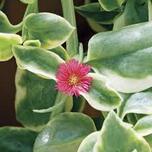
Mezoo, also known as dorotheanthus, is a lovely trailing plant of green leaves edged in white—perfect in a planter. It’s a succulent, which means it stores water in its leaves so it needs very little watering. Added bonus in summer: pretty little red flowers! Mezoo is sometimes sold at Arasapha's May Market.
Consider mint for your herb garden
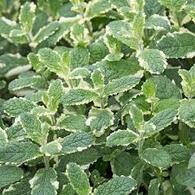 Pineapple mint
Pineapple mint
Mint is one of the easiest herbs to grow. In fact, it grows so aggressively that it's best grown in a pot rather than in the ground. If you don't want the pot to show, bury it in the ground!
Mojito mint is the mint originally grown in Cuba for mojitos! It has a slightly citrusy flavor that's milder than, say, spearmint. After all, a mojito isn't mouthwash!
Pineapple mint doesn’t look or smell like pineapple. With lovely ruffled white edges that remind some of a pineapple, it’s simply one of the prettiest mints you can have in your garden or on your kitchen windowsill.
Find a variety of mints at Arasapha's annual May Market.
Mojito mint is the mint originally grown in Cuba for mojitos! It has a slightly citrusy flavor that's milder than, say, spearmint. After all, a mojito isn't mouthwash!
Pineapple mint doesn’t look or smell like pineapple. With lovely ruffled white edges that remind some of a pineapple, it’s simply one of the prettiest mints you can have in your garden or on your kitchen windowsill.
Find a variety of mints at Arasapha's annual May Market.
Nasturtiums have it all!
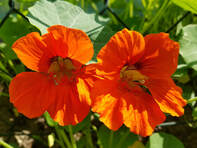
Nasturtiums are the garden's workhorses. They brighten sunny spots with orange, yellow, and red blooms. They love poor soil and neglect. And their petals and leaves are edible, adding a peppery pop to salads, stir fries, and pasta dishes. Learn more here. Find nasturtiums at the Herbs table at Arasapha's annual May Market.
Parsley comes in two varieties
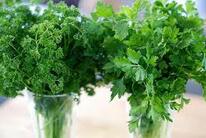
Parsley can be curly-leafed and flat-leafed or Italian. Flat-leafed parsley has a somewhat more robust flavor, while curly-leafed is prettier! Both are sold at Arasapha's annual May Market. Consider adding these neat, attractive plants to your flowerbed to enjoy their bright green foliage.
Did you know parsley is a biennial? That means it will come back a second year, although it will have fewer leaves and then go to seed. So enjoy your parsley plant a second time!
Did you know parsley is a biennial? That means it will come back a second year, although it will have fewer leaves and then go to seed. So enjoy your parsley plant a second time!
Today's petunias come in all shapes, sizes, and colors
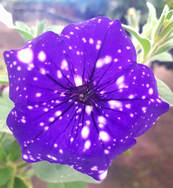 Supertunia "Night Sky"
Supertunia "Night Sky"
Petunias today are not your grandmother’s petunias! Old-fashioned petunias turned to mush in rain; they sometimes stopped blooming in summer heat; and the dead blooms needed to be "deadheaded"--pulled off by hand. New varieties address those shortcomings. They also have bigger blooms and come in striking colors including black.
Compact petunias grow in a nice neat mound and spread no more than a foot wide. Grandifloras, multifloras, floribundas, EZ Rider, Heat Elite, Madness, Mambo, Pretty Flora, Sophistica, and multifloras are all compact petunias. Grandifloras have large flowers; multifloras bloom prolifically, and floribundas do both.
Wave petunias spread rapidly to 4’ or more, making them great for flower beds. Double Wave, Easy Wave, Shock Wave, and Surfina are all wave petunias. Wave petunias are "self-cleaning," meaning you don't have to pull off those ugly spent blossoms to keep them looking pretty. Wave petunias do tend to stop blooming in summer heat.
Trailing petunias are best for hanging baskets. Cascadia, Colorblitz, Headliner, Supercascade, Supertunia, Surfinia, and Tidal Wave are all trailing petunias. Like wave petunias, supertunias are “self-cleaning.” They need regular feedings of plant food to keep looking their best.
Semi-trailing petunias, trailing just a foot or so, are great for hanging baskets when you want a neater look. Amore, Crazytunia, and Sweet Sunshine are all semi-trailing petunias.
Read more at www.gardendesign.com/annuals/petunias.html. Arasapha's May Market always offers some interesting petunias.
Compact petunias grow in a nice neat mound and spread no more than a foot wide. Grandifloras, multifloras, floribundas, EZ Rider, Heat Elite, Madness, Mambo, Pretty Flora, Sophistica, and multifloras are all compact petunias. Grandifloras have large flowers; multifloras bloom prolifically, and floribundas do both.
Wave petunias spread rapidly to 4’ or more, making them great for flower beds. Double Wave, Easy Wave, Shock Wave, and Surfina are all wave petunias. Wave petunias are "self-cleaning," meaning you don't have to pull off those ugly spent blossoms to keep them looking pretty. Wave petunias do tend to stop blooming in summer heat.
Trailing petunias are best for hanging baskets. Cascadia, Colorblitz, Headliner, Supercascade, Supertunia, Surfinia, and Tidal Wave are all trailing petunias. Like wave petunias, supertunias are “self-cleaning.” They need regular feedings of plant food to keep looking their best.
Semi-trailing petunias, trailing just a foot or so, are great for hanging baskets when you want a neater look. Amore, Crazytunia, and Sweet Sunshine are all semi-trailing petunias.
Read more at www.gardendesign.com/annuals/petunias.html. Arasapha's May Market always offers some interesting petunias.
In Delaware, rosemary is best grown in a container.
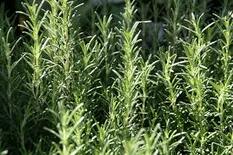
Rosemary grows in warmer climates as a perennial evergreen shrub. In Delaware, either grow it as an annual or grow it in a flower pot. Bring the pot indoors before frost as an aromatic winter houseplant, then take it back outside next spring. Arasapha's annual May Market always offers several varieties of rosemary. Arp rosemary is popular for its particularly strong scent. Barbecue rosemary has strong, straight stems that make great skewers for grilling.
What's the difference between sage and salvia?
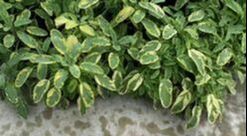 Golden sage has lovely pale green leaves with golden edges.
Golden sage has lovely pale green leaves with golden edges.
Did you know a sage plant is a salvia plant and vice versa? “Sage” refers to varieties grown for their aromatic leaves and “salvia” refers to varieties grown for their pretty spikes of flowers. Many sage varieties can be grown as perennials in Delaware. Arasapha's May Market often carries half a dozen varieties of aromatic sage and some interesting varieties of flowering salvia.
Consider sedum for fall garden color
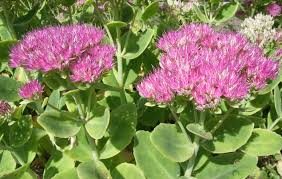
Sedum is a wonderful choice for almost any Delaware garden. It thrives anywhere that’s reasonably sunny, has interesting foliage, and bursts into huge pink, rose, or rust blooms in late summer/early fall when the rest of the garden is fading. The spent flowerheads are attractive all winter. To keep the long stems from flopping over, cut 4” off the tops when the plants are about 8” tall. Arasapha's May Market almost always has sedums donated from local gardens at bargain prices.
How can you grow a new spider plant from yours?
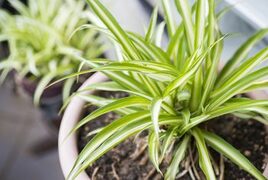
When happy with their conditions, spider plants begin growing baby spider plants known as plantlets. When removed and placed in water or soil, the roots of the plantlets grow and eventually mature into large spider plants themselves.
To grow a new spider plant from a plantlet, choose a plantlet that already has lengthy roots, then cut it from its stem or stolon.
Fill a 4-inch planting pot with draining holes two-thirds full of well-draining potting soil. Pour a small amount of rooting hormone into a dish. Wet the base of the plantlet with water, dip it in the hormone, then place it in the pot. Cover only the base with soil, lightly tapping the soil with your fingers to compact it and secure the base. Add enough water so the soil becomes moist.
Place the plantlet in indirect sunlight. (Full sun may kill the baby plant before it has a chance to grow roots.) Place the tip of your finger into the soil once every six or seven days. If the soil feels dry, add more water.
To grow a new spider plant from a plantlet, choose a plantlet that already has lengthy roots, then cut it from its stem or stolon.
Fill a 4-inch planting pot with draining holes two-thirds full of well-draining potting soil. Pour a small amount of rooting hormone into a dish. Wet the base of the plantlet with water, dip it in the hormone, then place it in the pot. Cover only the base with soil, lightly tapping the soil with your fingers to compact it and secure the base. Add enough water so the soil becomes moist.
Place the plantlet in indirect sunlight. (Full sun may kill the baby plant before it has a chance to grow roots.) Place the tip of your finger into the soil once every six or seven days. If the soil feels dry, add more water.
Grow tarragon to add a distinctive French flavor to your dishes.
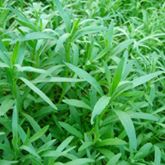
Tarragon is a perennial herb with a lovely scent that’s like anise or licorice. It adds a wonderful touch to delicate dishes like chicken, fish, and eggs and to vinaigrettes and bearnaise sauce. Arasapha's annual May Market almost always offers tarragon.
So much thyme!
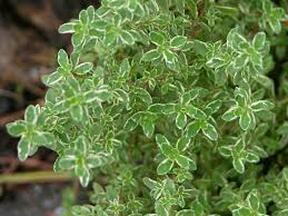 Lemon thyme leaves have white edges and (surprise!) a lovely lemon scent.
Lemon thyme leaves have white edges and (surprise!) a lovely lemon scent.
Thyme is not only a great herb in many dishes but also a lovely garden plant, covered with flowers in springtime. French and English thyme are the varieties used most often in cooking; the main difference is leaf color and shape. Some thyme varieties like Pink Chintz grow only an inch tall, so they’re used as a lovely groundcover rather than in cooking. Thyme is perennial, so you’ll always have thyme! (groan…) Click here for more information on thyme. Arasapha's annual May Market often carries half a dozen or more varieties of thyme.

